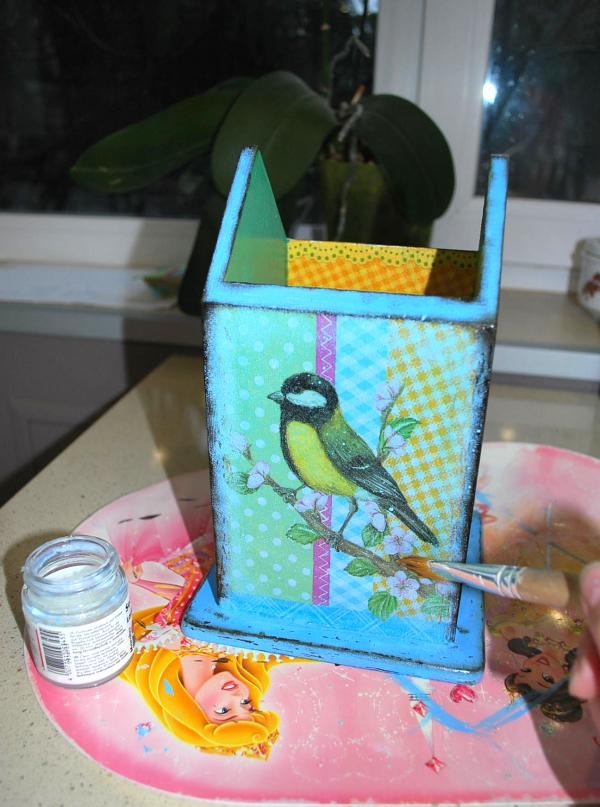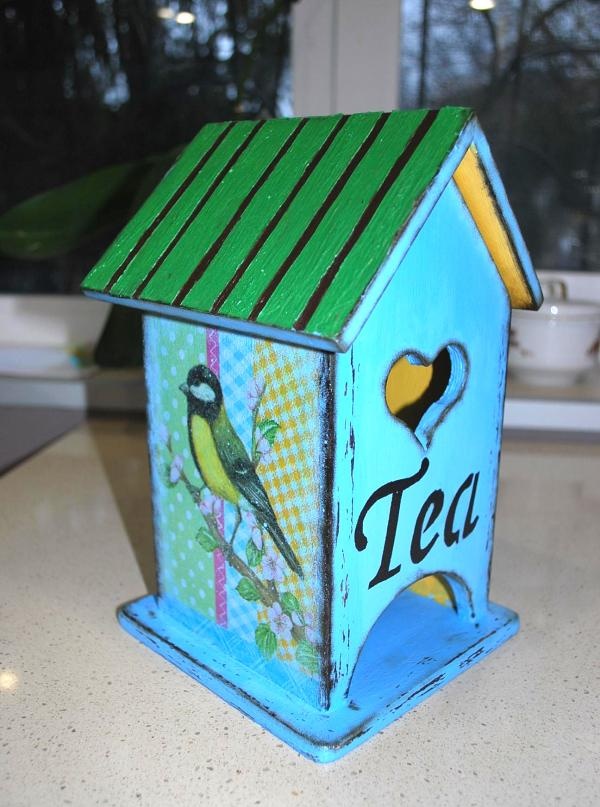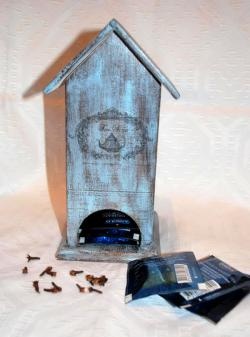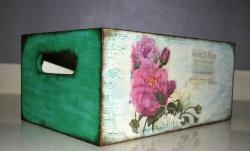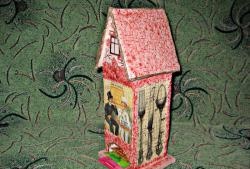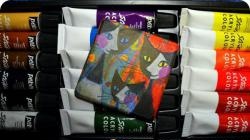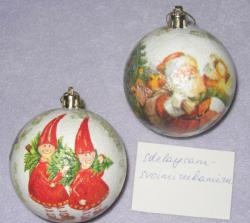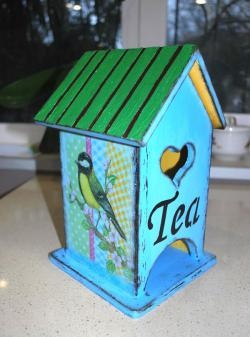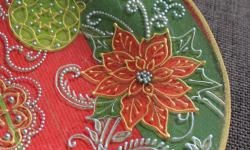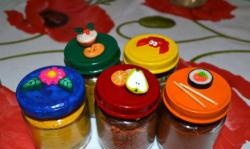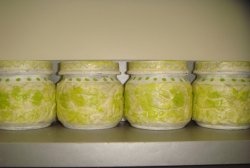For making a tea house using the technique decoupage we will need the following materials:
- wooden blank “Tea House”;
- napkin;
- artistic acrylic primer;
- acrylic paints for creativity (blue, yellow, green (leaf green, brown);
- bitumen (or burnt umber);
- stationery PVA glue (or acrylic varnish);
- paraffin candle;
- facet varnish;
- acrylic varnish for finishing the product;
- brushes, foam sponges, masking tape, sandpaper, stationery file, “TEA” stencil.

The first step in decorating a wooden workpiece is sanding all side surfaces with sandpaper - bringing it to a smooth state. We remove all small chips and flaws so that our workpiece is as smooth as possible. After sanding, coat the outer surfaces with acrylic artist primer.
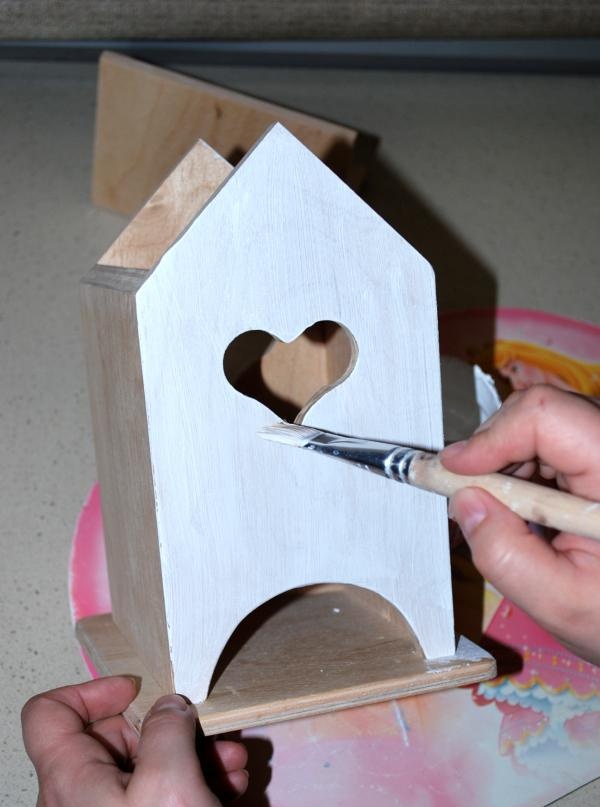
If you are not going to decorate the internal surfaces, you don’t need to prime them. After the primer has dried, you can go over it again with fine sandpaper to even out the thickness of the coating if the primer was applied unevenly. To give the effect of “time,” we paint the places of future “scuffs” with brown acrylic paint, which in the future will appear through the main color and create that same antique effect.

After the brown paint has completely dried, we rub some places with an ordinary wax candle; excess and large crumbs must be removed with a sponge or soft cloth.
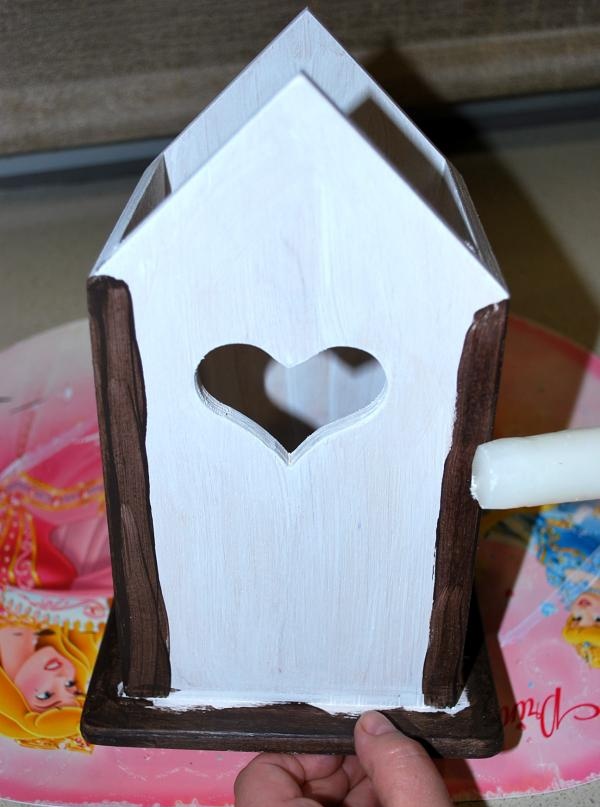
We cover our house with paint of the main blue color.

If brown paint shows through, you can apply a second coat of blue paint. After complete drying, we carefully go over the places that we rubbed with a candle with sandpaper to create abrasions.

The element of the napkin pattern that we will glue is quite large. In order to stick it without wrinkles, we will use the so-called technique. "gluing by file method."
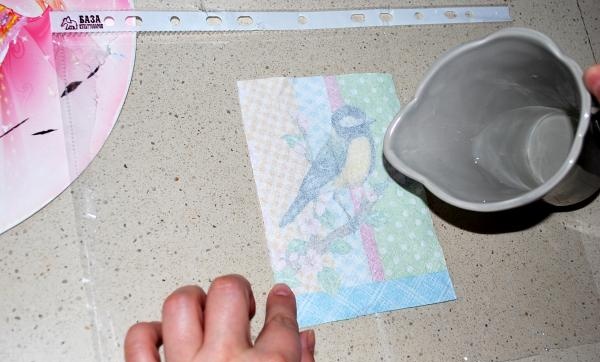
Place the napkin face down on a regular stationery file (do not forget to remove the lower white layers of the napkin). Gently pour water evenly onto the center of the napkin.
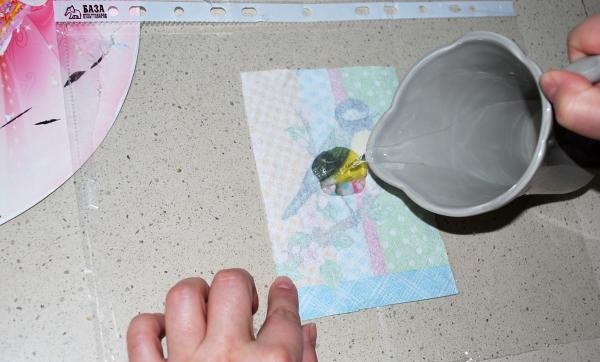
Distributing the water over the entire surface, we level our napkin with a brush or fingers, expelling all the bubbles. Drain off excess water. We apply the file with the napkin to the side surface of the house, smooth it out, gently pressing the design, and slowly remove the file from the edge of the napkin - voila, and not a single wrinkle! Without waiting for it to dry, glue the top with decoupage varnish or PVA glue (diluted 1:1 with water).
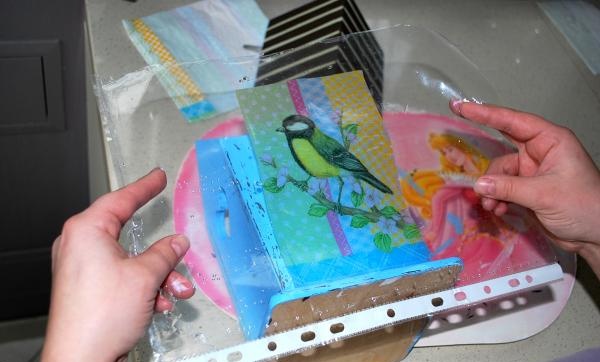
While our house is drying, we will decorate the roof. Once primed and painted brown, we mark the roof into strips using masking tape.Apply a one-component beveled varnish evenly, not very thickly, on top, which, when dry, will give us beautiful small cracks and imitate “traces of time.”

Without waiting for the varnish to dry, remove the masking tape. Using a stencil, we will apply the inscription “Thea” to the façade surface. To prevent the stencil from moving, we attach it with masking tape and, using a sponge, drive the paint (burnt umber) into the stencil using a “smacking” motion.

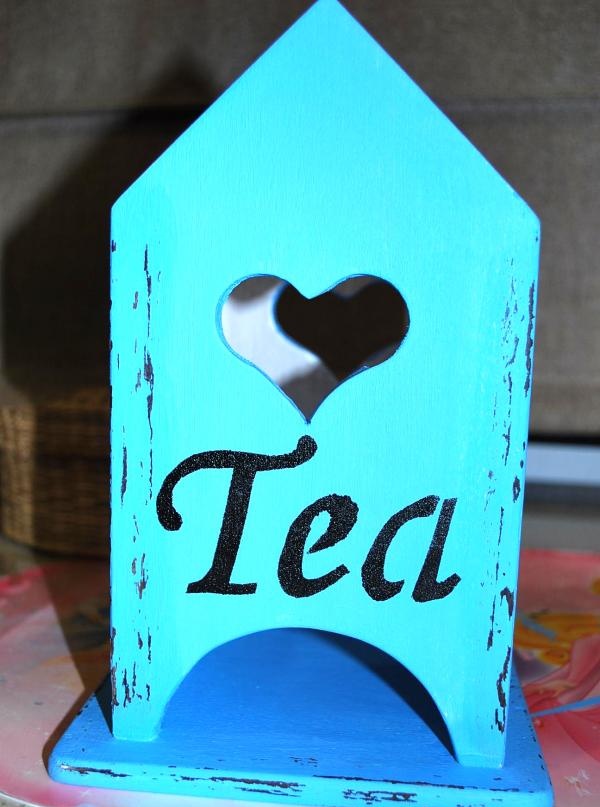
To smooth the edge of the napkin and create a smooth transition, we beat off the edges of the design with light blue paint.

Apply small sprays of the same paint using a toothbrush.
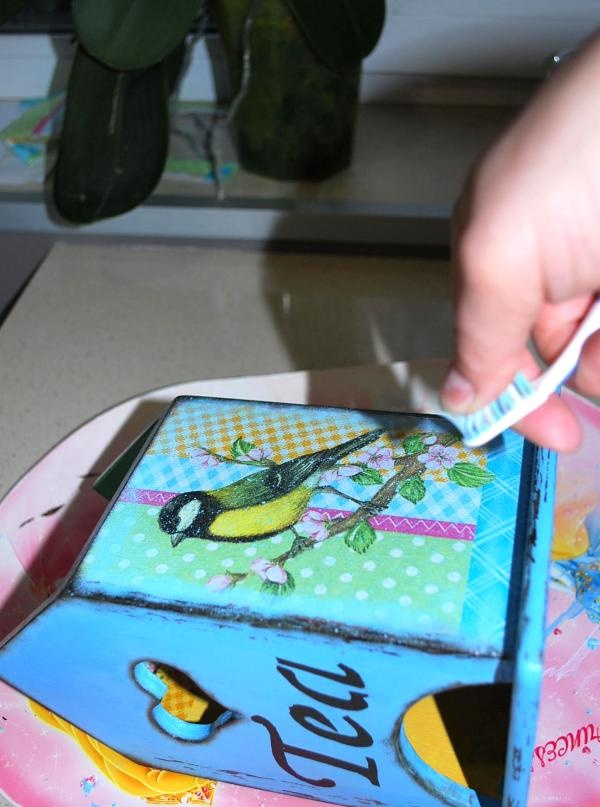
Using a sponge, we beat off all the edges of our house with bitumen (or burnt umber) using “smacking” movements.
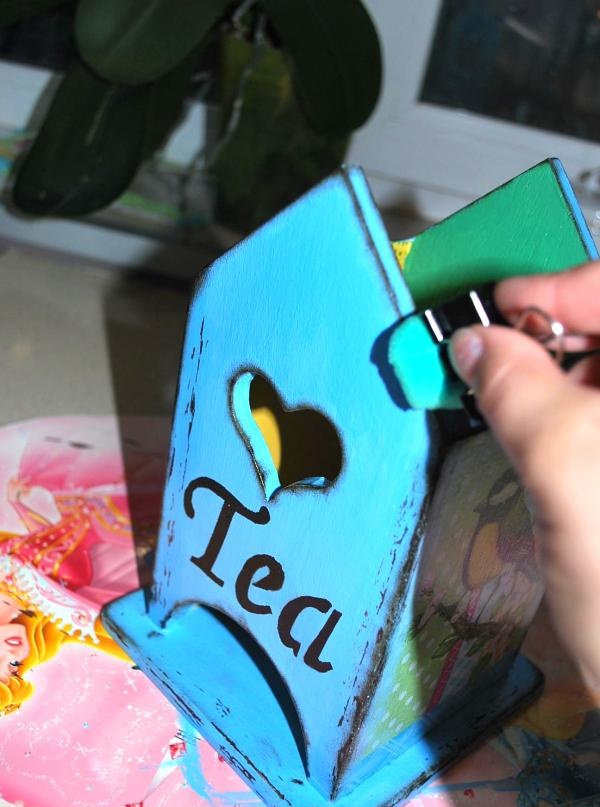
After complete drying, we cover the house with several layers of acrylic finishing matte varnish.
